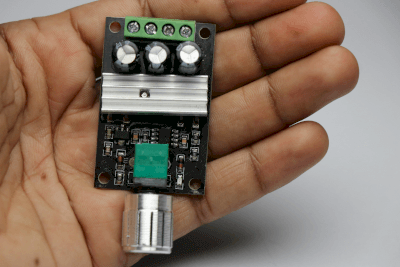What Is a PWM Controller?

A PWM (pulse width modulation) controller is a device that adjusts the pulse width of current or voltage, maintaining a constant frequency. This modulation alters the duty cycle to control the duration of the ‘on’ and ‘off’ states of the pulses. The duty cycle is calculated by dividing the pulse width by the total cycle time. Semiconductor devices are utilized for PWM switching.
Uses of PWM Controllers
PWM controllers regulate motor speeds across various types, including AC, DC, and synchronous motors. In the manufacturing industry, AC motors often incorporate feedback from speed detectors, like pulse generators, to adjust the motor’s speed accurately. The feedback signal is processed to determine the precise voltage required, which is then applied using the PWM controller integrated into the board.
Principles of PWM Controllers
PWM controllers generate output pulses by modulating a sine wave (the control source) with a sawtooth wave (carrier) using a comparator made of operational amplifiers. A pulse is created when the sine wave exceeds the sawtooth wave and is turned off when it is less. This process produces pulses that are denser at higher sine wave values and sparser at lower ones. Switching devices, such as transistors and thyristors, are employed for this on/off mechanism, functioning through signals received at their gates.
Structure of PWM Controllers
The structure of a PWM controller includes three primary components: a data register, a counter, and a comparator. Each period and duty register is associated with a specific comparator, whose outputs connect to the set and reset pins of a flip-flop circuit. This configuration allows for precise control of the PWM signal’s cycle width and pulse width, enabling the output of a consistent PWM signal.
Other Information on PWM Controllers
Precautions When Using a PWM Controller
PWM control benefits from reduced stress on transistors and currents by only allowing current flow during the ‘on’ phase of power pulses. However, a drawback is the potential for a self-induction effect caused by the motor’s coil inductance when PWM control is off, leading to significant electromagnetic interference and potential damage. Implementing flywheel diodes in the circuit mitigates these issues by redirecting reverse power back to the motor.